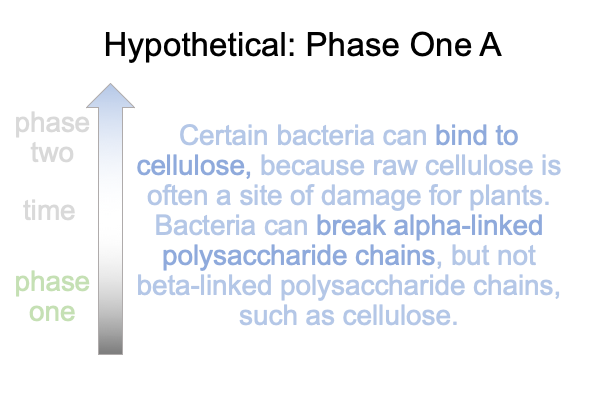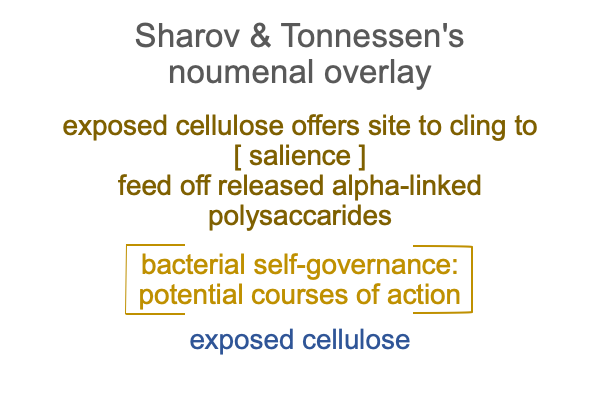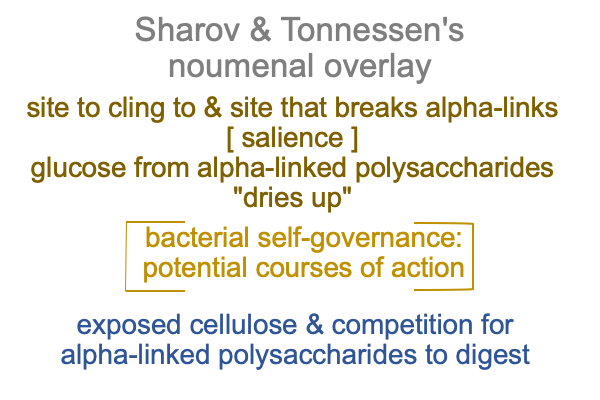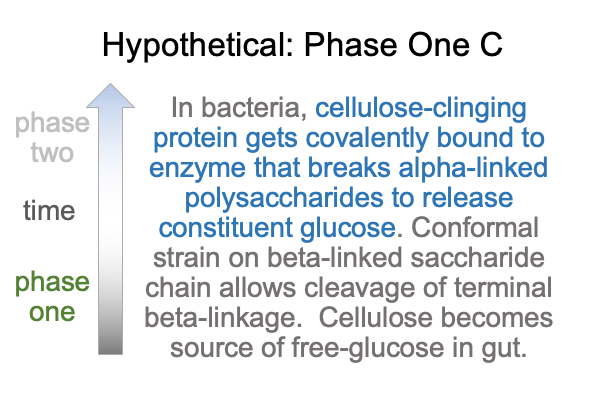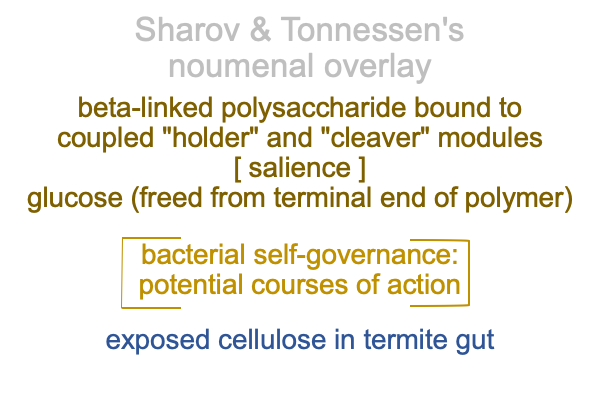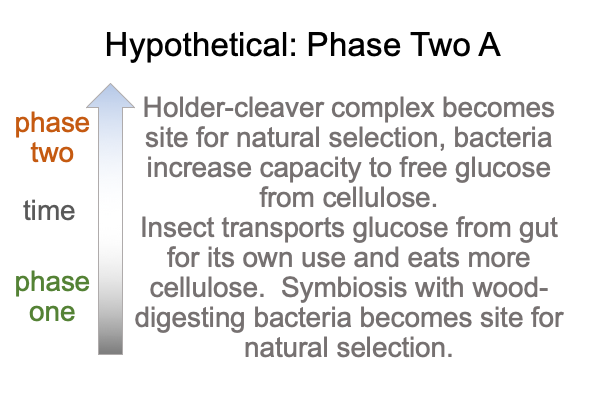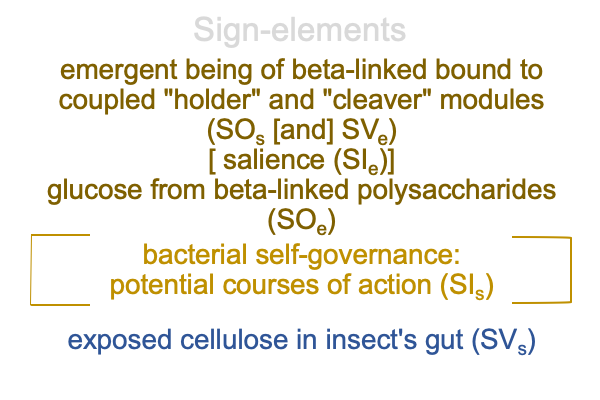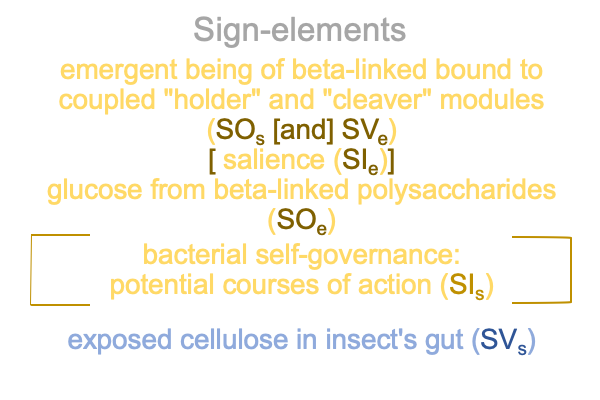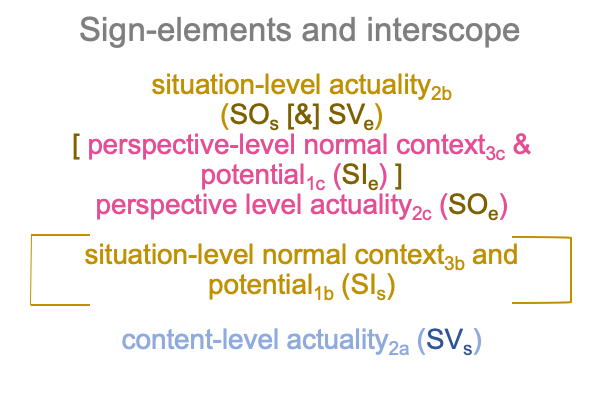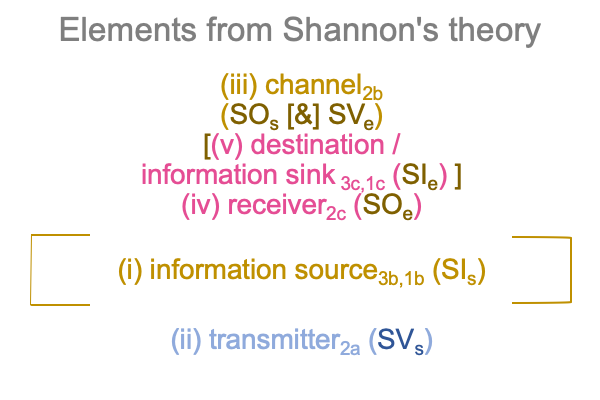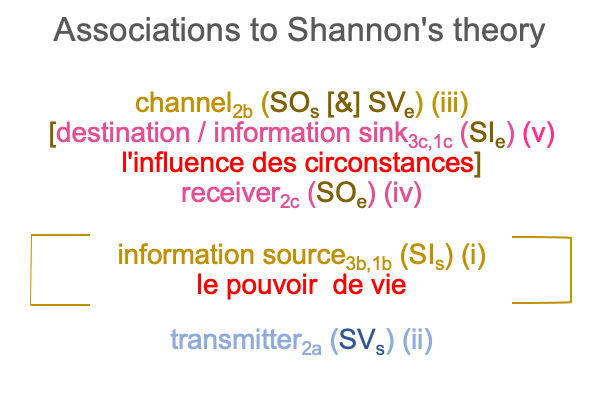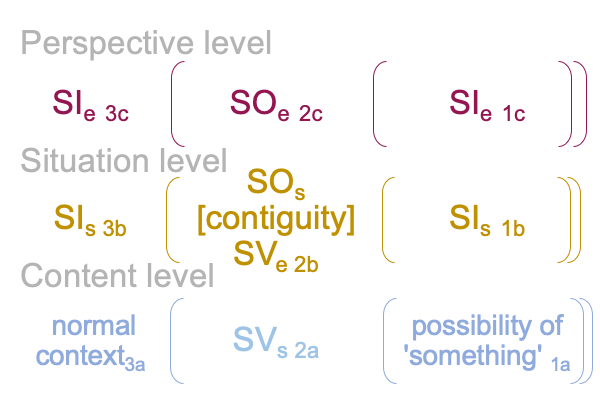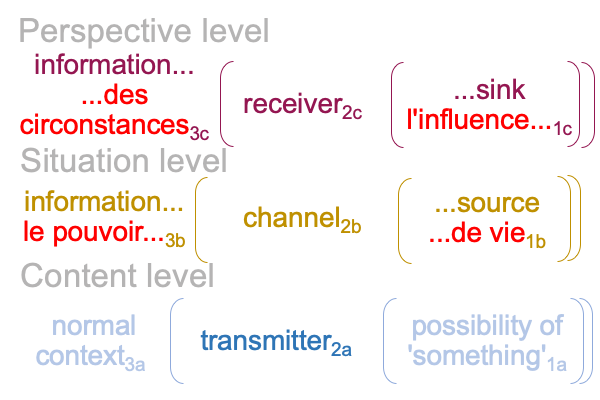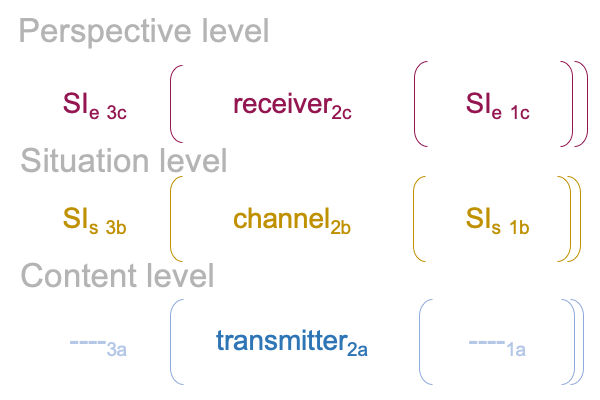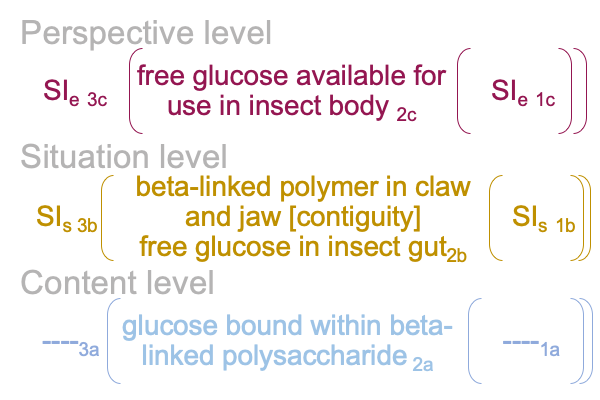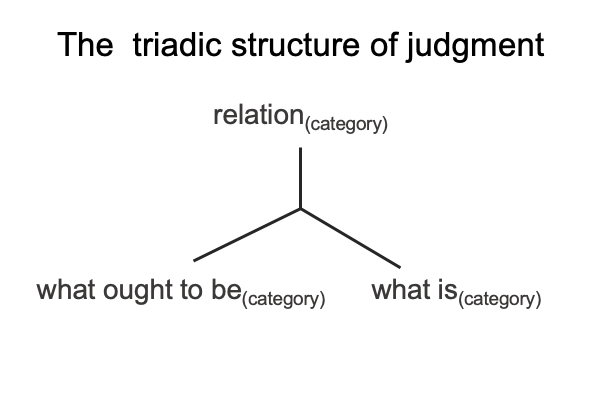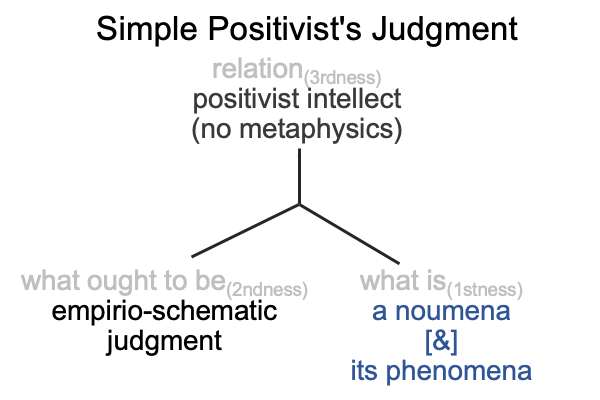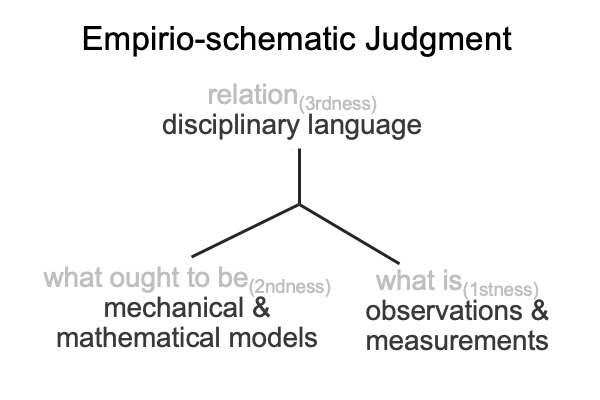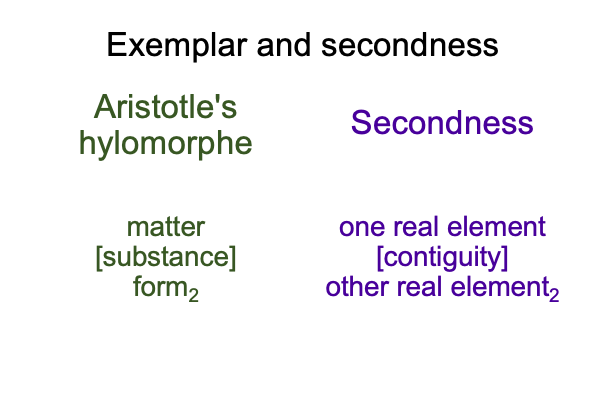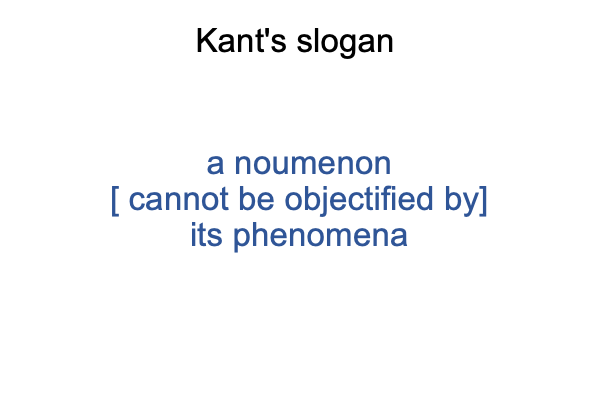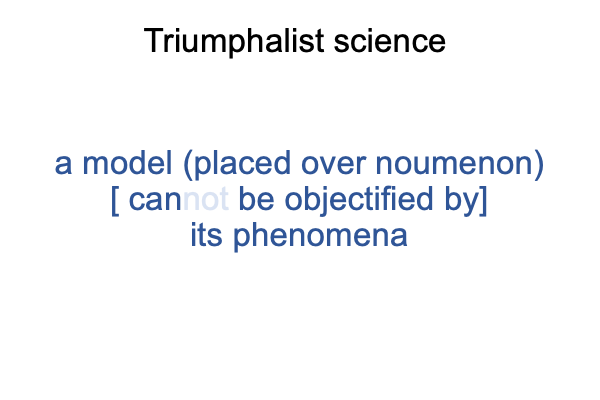Looking at Gustavo Caetano-Anolles’ Chapter (2024) “Evolution of Biomolecular Communication” (Part 2 of 10)
0333 Well, what if matter… er… information… consists of multiple biomolecules that are… um… modular… in so far as they… because of circumstances… simultaneously engage in a cooperative endeavor… a “love”, so to speak?
Some would say that this what if is similar to the hierarchical relation between parts and a whole.
But, would the whole be the form associated with goal or the form associated with the real initiating event?
Or, would it be the thing called “semiotic agency”?
0334 At the start of section 10.2, the author lays this ambiguous multiple metaphor onto the procrustean bed of an evolutionary paradigm, where (on a molecular level) biological parts are added to one another in a piecemeal way to an evolving system.
The author proposes a phylogenomic-based biphasic model of module creation that explains evolutionary growth in biochemical systems. In phase one, modules nest within one another, in a provisional sort of way, until over time or suddenly, the form that is goal clarifies. Different modules start to work together as a semiotic agent. In phase two, modules working within that functioning cooperative change as semiotic agency diversifies.
0335 The second phase associates to “adaptation”.
The first phase does not have a proper name. I suggest the term, “empedoclement”.
An empedoclement is the inverse of an impediment.
0336 Here is an analogy.
Recently, I joined a tennis club. I trained to play the game by enduring real initiating events and reviewing information on my performance. Since I am so modular, different aspects of me perform independently of one another, so I did not adapt well to the circumstances. My instructor says that if I don’t think about what I am doing with each of my modules,then I could move holistically in a coordinated manner. I will become an adept, rather than a lackluster player full of impediments.
0337 One would think that routinely training and playing tennis would lead to (perhaps slow, but) steady improvement towards the goal of being competitive. This is a matter of adaptation. All the facets of mind and body are modular. Each module develops along its own trajectory. In apparent stasis, improvement is held at bay by one or two recalcitrant modules. In surprisingly fast change, two or more modules improve in tandem. The fast change could be an empedoclement.
0338 While this analogy helps, I find it difficult to imagine that first phase, where parts are present and may afford some advantages, but no one part realizes the game that is afoot.
0339 The author offers two images as metaphors for the phylogenomic-based biphasic model.
One metaphor is a tree, where the roots represent modules, the trunk stands for the modules coalescing into matter [love] form, where matter is information and the form is a telos or an end.
The other metaphor portrays modules themselves, which over time, interact to generate scaffolds and active sites, until a robust combination constellates.
Here is a picture of the second metaphor.
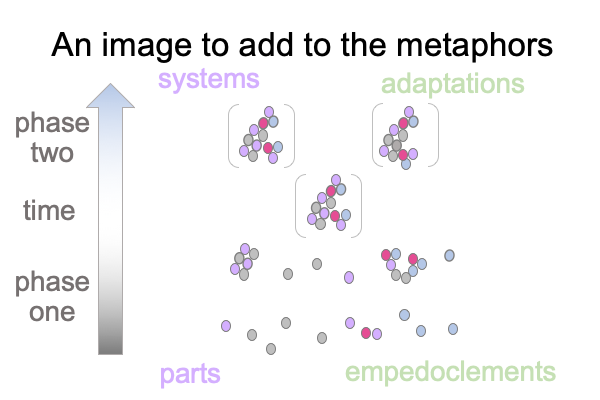
0340 The word, “constellates”, is a psychological term (actually, Jungian) that marks the coming into presence (esse_ce) of an archetypal form (essence). The result may be called “a primordial image”.
For example, the archetype of the king may constellate in a variety of ways, including the duplicitous and the honest, the greedy and the beneficent, as well as the foolish and the wise. Each pair of these primordial images informs us of a module within the one archetype and how that module can yield different responses to similar circumstances.
0341 But, can the word, “constellate”, also label the coming together of modules within an archetype as an empedoclement?

